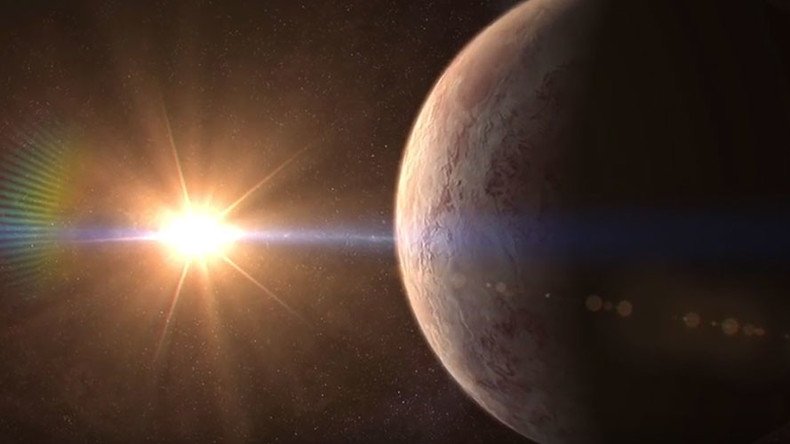New ‘super-Earth’ found orbiting red dwarf 33 light years away

A ‘super-Earth’-like planet about five times the size of Earth has been discovered orbiting a bright red dwarf star some 10 parsecs – or 33 light years – away.
‘Super-Earth’ planets have a mass higher than our planet’s but well below those of ice planets Uranus and Neptune.
The new discovery was made by researchers at the University of La Laguna whose study on the exoplanet has been accepted for publication in the Astronomy & Astrophysics journal.
READ MORE: Roundest-ever natural object found 5,000 light years away
Exoplanet GJ 536 b, which does not orbit within its star’s habitable zone, boasts a short orbital period (less than nine days) and a mass around 5.4 times that of Earth.
"This rocky exoplanet is orbiting a star much smaller and cooler than the sun," says one of the study’s co-authors Jonay Isaí González. "But it is sufficiently nearby and bright.”
The exoplanet orbits a red dwarf which has a cycle of magnetic activity similar to the sun, although with a shorter period of three years.
“We are preparing a programme of monitoring for transits of this new exoplanet to determine its radius and mean density," said the study’s lead author Alejandro Suárez Mascareño, ScienceDaily reports.
Mascareño and his team are continuing their research in the hope of discovering other planets like GJ 536 b as, he says, “rocky planets are usually found in groups”.
As the nearby red dwarf star is visible from Earth’s northern and southern hemispheres, the likelihood of detecting other low-mass planets within its habitability zone is strong, according to the researchers.
“We are pretty sure that we can find other low-mass planets in orbits further from the star, with periods from 100 days up to a few years,” says Mascareño.












